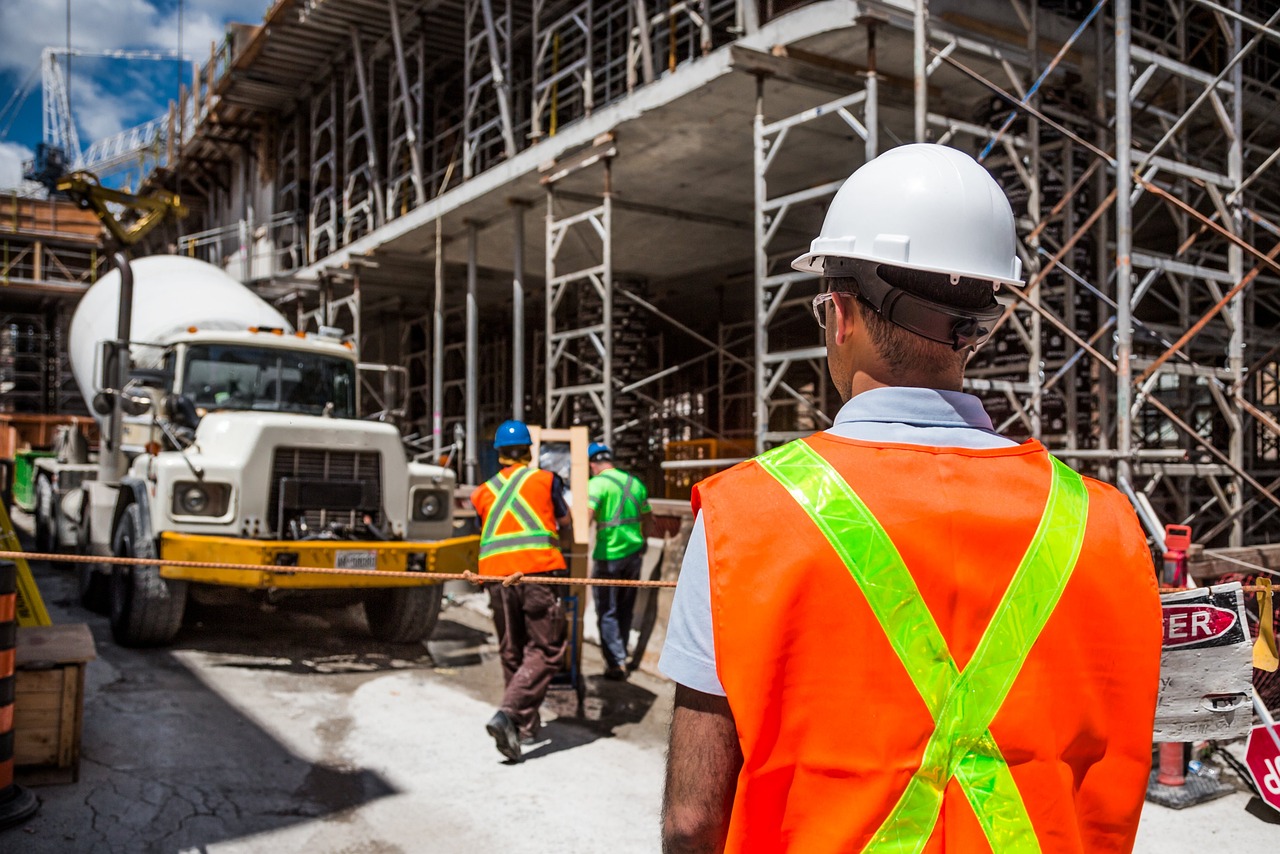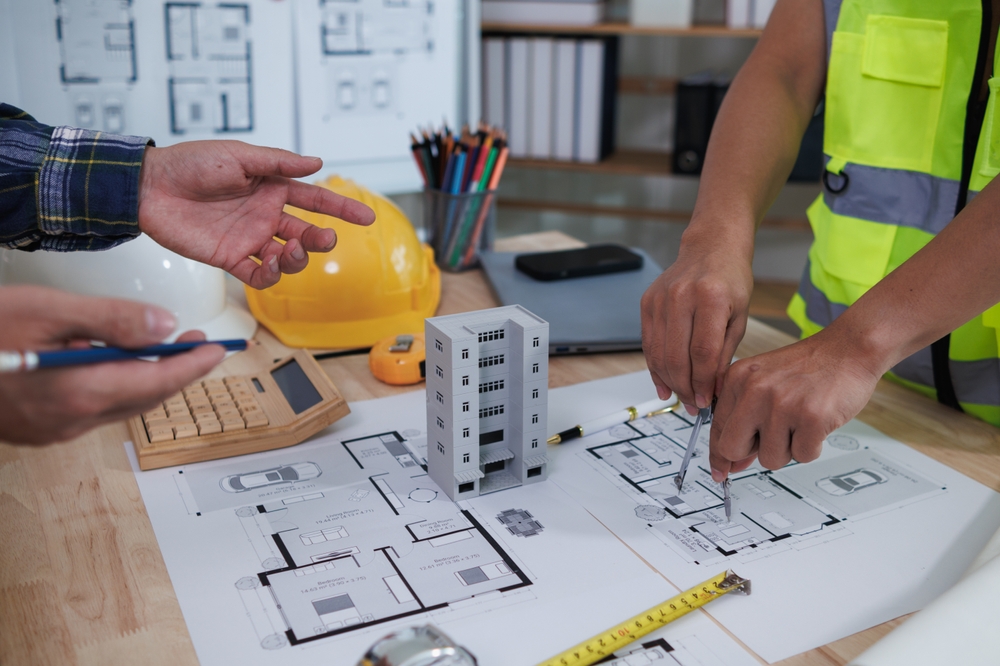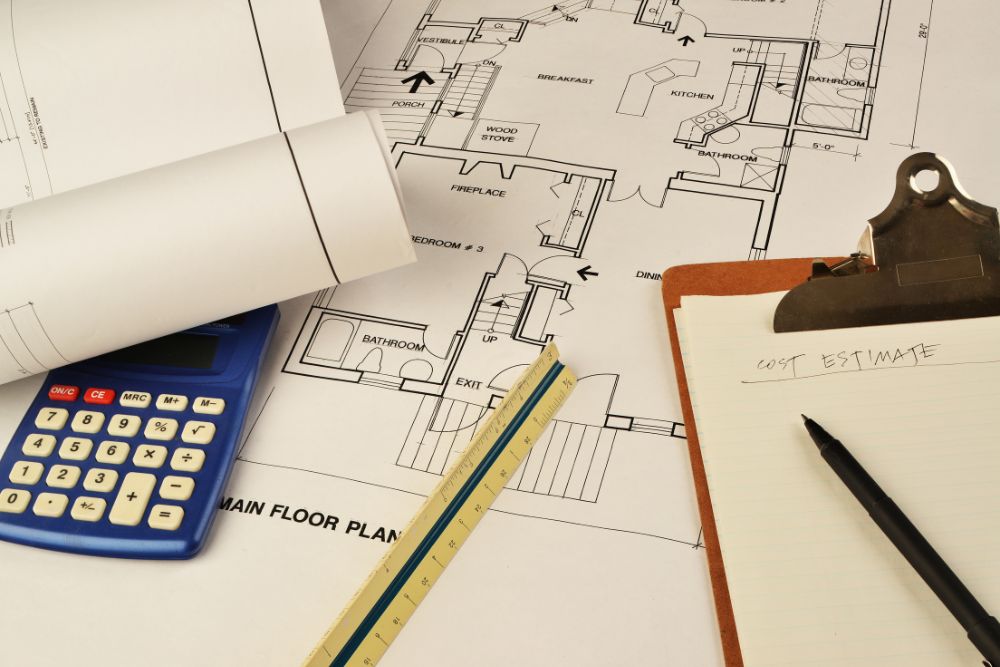Did you know that a construction estimator’s job begins before a single brick is laid? Estimators are the ones who plan out how much a project will cost, helping make sure everything stays on budget from day one.
In fact, studies show that nearly 70% of construction projects that go over budget do so because of inaccurate estimates early on. That’s why estimators are so important—they help builders avoid surprises and manage costs before the work even starts.
While architects design the building and contractors handle construction, estimators focus on the numbers. They calculate the costs of materials, labor, and equipment, and they create the financial plan that guides the entire project. Whether it’s a small house or a giant office tower, their work plays a big role in whether a project finishes on time and within budget.
In this blog, we’ll explain what construction estimators really do, the different types of estimates they create, common challenges they face, and how modern tools have made their job faster and more accurate.
What is a Construction Estimator?
The job of a construction estimator consists of professional responsibility to forecast construction project expenses. Through their assessment of project blueprints and plans and specifications they calculate the necessary expenses for materials and work labor and additional resources needed throughout project completion. Construction estimators collaborate with architects and project managers and contractors to achieve budget goals and profitable execution.
Construction project financial planning becomes their fundamental responsibility because they establish the total cost needed to transform the project vision into reality. The estimates submitted by estimators act as determiners of project feasibility and their precision decides between project success or failure.
What a Construction Estimator Really Does
A construction estimator’s core responsibility lies in his/her capability to properly estimate the costs and quote for construction jobs. Here’s an inside glimpse at their work on a day-to-day basis:
- Reading Plans and Specifications: Estimators review blueprints and project plans in order to understand the scope and needs of the construction. They read every minute detail, including the material being used and how it is going to be built.
- Computing Material and Labor Costs: They estimate the amount and price of materials required and the amount of labor needed to finish the work. This covers everything from raw materials to subcontractor fees.
- Preparing Bids: Once costs are estimated, the estimator develops a comprehensive bid to present to the client or general contractor. The bid explains the cost breakdown and the reasonableness of the prices.
- Monitoring and Adjusting Estimates: During project execution estimators track down alterations to project scope together with material price changes and unexpected problems to avoid budget deviations. Project cost maintenance is their responsibility through updated estimates to alert project managers about potential budget overruns.
- Risk Management: Through predictive analysis estimators detect potential risks including material cost rise or timeline delays which they strategize solutions to overcome these possible risks. Budget surprises become unlikely during project development due to advanced risk prevention measures that lead to simplified project finalization.

Types of Estimates and When to Apply Them
During construction estimating, various types of estimates are applied depending on where a project is in progress. Each has a specific use depending on the amount of information available and the stage of a project. The following are the most popular types:
| Estimate Type | Overview |
| Order of Magnitude Estimate | A rough estimate based on limited information, used early in the project. Accuracy: +50% to -30%. |
| Preliminary Estimate | A more refined estimate with basic details about scope and design. Accuracy: +25% to -15%. |
| Detailed Estimate | A highly accurate estimate with a complete breakdown of labor, materials, and costs. Accuracy: +5% to -10%. |
| Bid Estimate | The contractor’s price was submitted in response to a bid request, based on detailed project specs. |
| Cost-plus Estimate | A reimbursement-based estimate where the client pays actual costs plus a contractor’s fee. |
Common Challenges Estimators Face
Construction estimation requires detailed job skills that present several difficulties to estimators. These represent some of the usual challenges estimators experience:
- Fluctuating Material Prices: Materials pricing may fluctuate from the moment an estimation takes place until materials purchases are made thus affecting budget estimates.
- Incomplete or Changing Project Plans: Project estimators need to manage quick revisions of their numbers when project plans shift or essential details disappear from the design. Inadequate information leads directly to wrong estimates.
- Managing Risk: Estimators need to consider future problems such as supply delays or labor shortages while developing alternative plans that should be incorporated into their estimates.
- Tight Deadlines: Estimators face considerable time constraints particularly during bidding as they lack enough time to finish their work tasks.

The Digital Evolution of Estimating: Tools & Trends
Over the years, technology has revolutionized the way estimators work. The advent of specialized software, digital tools, and data analytics has made the estimating process faster and more accurate. Here’s a look at how technology is changing the game:
- Software Tools: Estimators now use digital tools like Bluebeam, PlanSwift, and CostX to measure quantities, track material costs, and calculate estimates. These programs help speed up the work and reduce mistakes.
- Cloud Collaboration: Cloud-based systems let estimators work with contractors, architects, and project managers in real time. This keeps everyone on the same page and helps avoid miscommunication.
- Data Analytics: Estimators can now access a lot of past project data. This helps them make better cost predictions by comparing similar jobs and spotting trends.
Skills for a Construction Estimator
To succeed in this role, an estimator must possess a unique combination of technical knowledge, analytical ability, and communication skills. Key skills include:
- Technical Knowledge: An understanding of construction methods and materials with knowledge of price determination needs exists for the role of estimator. The understanding of basic construction procedures helps the estimator create estimates with more accuracy.
- Mathematical and Analytical Skills: Each working day contains numerical data which estimators analyze. Accurate calculations require excellent mathematical abilities from estimators in their work.
- Attention to Detail: Small mistakes in the process can generate serious problems. Estimators must perform a thorough check of their calculations and maintain care in every step.
- Communication Skills: The process of cost clarification requires Estimators to interact frequently with clients as well as contractors and colleagues. Good communication prevents confusion.
- Time Management: The preparation of most estimates becomes urgent especially when bidding processes begin. Time management skills along with deadline handling ability must be present in estimators.
Conclusion
Every building project depends on successful construction estimating to achieve its goals. The foundation of proper planning with budgeting and smooth execution derives from this process. The profession of an estimator includes tasks beyond number computations because they perform blueprint analysis for risk identification and cost monitoring for complete project understanding.
Progress in the construction industry leads to improved estimating processes because of new tools and enhanced teamwork methods. A project requiring an accurate and clear estimate must be attainable for every type of builder working on homes or large scale development or commercial construction.
Prime Estimation delivers speedy and dependable statements of cost including comprehensive breakdowns that match each project requirement. Your focus on the successful job completion is protected by our team who will manage all project numbers.
FAQ’s
What software tools do estimators use?
Common tools include Bluebeam, PlanSwift, and CostX. These programs help estimators measure quantities, calculate costs, and reduce manual errors.
How do estimators handle changes during a project?
Estimators prepare change order estimates when project scope or site conditions change. These updates help adjust the budget and keep the project on track financially.
When is a construction estimate created?
The creation of estimates moves through different developmental stages where initial basic predictions transition into additional refined estimates with the acquisition of project information. The budget remains updated from the beginning of project execution until project completion and every change throughout requires adjustment.
Do I need different estimates for different project phases?
Yes. You may need a preliminary estimate early in the planning stage, a detailed estimate once the design is finalized, and change order estimates as needed during construction.












